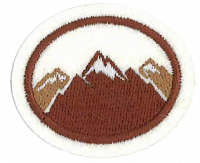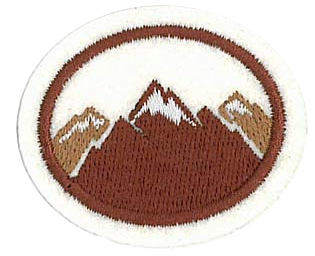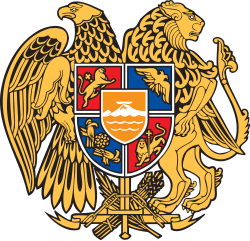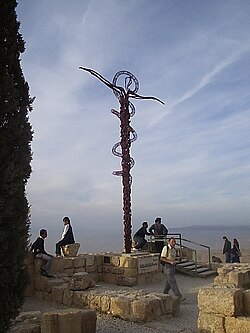Especialidades JA/Montañas/Respuestas
1
1a
1b
1c
1d
1e
2
Some mountains are produced by the movement of lithospheric plates several miles down deep in the earth. Compressional forces in continental collisions may cause the compressed region to thicken, so the upper surface is forced upwards. Some mountains are volcanoes while others are shaped by glacial processes.
3
4
| Descripción | Montaña |
|---|---|
| Cordillera submarina que da la vuelta al mundo (Dorsal mediooceánica) | Aconcagua |
| Las montañas más altas de cada continente (Siete Cumbres) | Monte Everest |
| La montaña más alta de Sudamérica (Aconcagua) | Himalaya |
| La montaña más alta de la tierra (Monte Everest) | Monte Mayón |
| La cordillera más larga del mundo (Cordillera de los Andes) | Dorsal mediooceánica |
| La montaña más alta de Japón (Monte Fuji) | Damavand |
| El volcán más alto de Asia (Damavand) | Monte McKinley |
| Los indios lo llaman Denali, «El más grande» (Monte McKinley) | Siete Cumbres |
| La montaña conocida por su «cono perfecto» (Monte Mayón) | Cordillera de los Andes |
| La cordillera con las montañas más altas de la tierra (Himalaya) | Monte Fuji |
5
5a
Mount Ararat (Turkish: Ağrı) is a snow-capped, dormant volcanic cone in Turkey. It has two peaks: Greater Ararat (the highest peak in Turkey, and the entire Armenian plateau with an elevation of 5,137 m/16,854 ft) and Lesser Ararat (with an elevation of 3,896 m/12,782 ft).
The Ararat massif is about 40 km (25 mi) in diameter. The Iran-Turkey boundary skirts east of Lesser Ararat, the lower peak of the Ararat massif. It was in this area that, by the Tehran Convention of 1932, a border change was made in Turkey's favour, allowing it to occupy the eastern flank of Lesser Ararat.
Mount Ararat in Judeo-Christian tradition is associated with the "Mountains of Ararat" where, according to the book of Genesis, Noah's ark came to rest. All humans and animals dispersed from the ark at Ararat after the flood. It is also likely where the rainbow promise was given. See Genesis 8:4 The Mountains of Ararat refer to a region, not necessarily a specific peak.[1]
Various expeditions and efforts with overhead photography have been and continue to be mounted to identify Noah's Ark remains in the region, but to date no credible finds have been made.[2]
Mt Ararat also plays a significant role in Armenian culture and nationalism. The mountain can be seen on the Coat of arms of Armenia and on some of the country's banknotes.
5b
Elijah offered sacrifices to God in front of King Ahab’s prophets of Baal on this mountain. 1 Kings 18:20
According to the Books of Kings, Elisha traveled to Carmel straight after cursing a group of young men because they had mocked him and the ascension of Elijah by jeering, "Go on up, bald man!" After this, bears came out of the forest and killed 42 of them. This does not necessarily imply that Elisha had sought asylum there from any potential backlash, although the description in the Book of Amos, of the location being a refuge, is dated by textual scholars to be earlier than the accounts of Elisha in the Book of Kings,[11][12] and according to Strabo it had continued to be a place of refuge until at least the first century.
According to Epiphanius, and Josephus, Mount Carmel had been the stronghold of the Essenes that came from a place in Galilee named Nazareth; though this Essene group are sometimes consequently referred to as Nazareans, they are not to be confused with the "Nazarene" sect, which followed the teachings of Jesus, but associated with the Pharisees. Members of the modern American groups claiming to be Essenes, but viewed by scholars as having no ties to the historical group,[16] treat Mount Carmel as having great religious significance on account of the protection it afforded to the historic Essene group.
During World War I, Mount Carmel played a significant strategic role. The (20th century) Battle of Megiddo took place at the head of a pass through the Carmel Ridge, which overlooks the Valley of Jezreel from the south. General Allenby led the British in the battle, which was the turning point in the war against the Ottoman Empire. The Jezreel Valley had played host to many battles before, including the very historically significant Battle of Megiddo between the Egyptians and Canaanites, but it was only in the 20th century battle that the Carmel Ridge itself played a significant part, due to the developments in munitions.
In ancient Canaanite culture, high places were frequently considered to be sacred, and Mount Carmel appears to have been no exception; Thutmose III lists a holy headland among his Canaanite territories, and if this equates to Carmel, as Egyptologists such as Maspero believe, then it would indicate that the mountain headland was considered sacred from at least the 15th century BC. According to the Books of Kings, there was an altar to God on the mountain, which had fallen into ruin by the time of Ahab, but Elijah built a new one. Iamblichus describes Pythagoras visiting the mountain on account of its reputation for sacredness, stating that it was the most holy of all mountains, and access was forbidden to many, while Tacitus states that there was an oracle situated there, which Vespasian visited for a consultation; Tacitus states that there was an altar there, but without any image upon it, and without a temple around it.
In mainstream Jewish, Christian, and Islamic thought, Elijah is indelibly associated with the mountain, and he is regarded as having sometimes resided in a grotto on the mountain. Indeed, one name for Mount Carmel is جبل مار إلياس Jabal Mar Elyas Mount Saint Elias. In the Books of Kings, Elijah challenges 450 prophets of a particular Baal to a contest at the altar on Mount Carmel to determine whose deity was genuinely in control of the Kingdom of Israel; since the narrative is set during the rule of Ahab and his association with the Phoenicians, biblical scholars suspect that the Baal in question was probably Melqart.
According to the Bible in 1 Kings 18, the challenge was to see which deity could light a sacrifice by fire. After the prophets of Baal had failed to achieve this, Elijah had water poured on his sacrifice to saturate the altar and then he prayed; fire fell and consumed the sacrifice, wood, stones, soil, and water which prompted the Israelite witnesses to proclaim, "The LORD, He is God! The LORD, He is God!". In the account, Elijah announced the end to a long drought; clouds gathered, the sky turned black, and it rained heavily.
Though there is no biblical reason to assume that the account of Elijah's victory refers to any particular part of Mount Carmel, Islamic tradition places it at a point known as El-Maharrakah, meaning the burning.
5c
God gave the ten commandments to Moses on this mountain. Exodus 19: 23 – 20: 3-17 and the Israelite camped there, offering to the golden calf. Moses also may have encountered the burning bush at or near Mt Sinai before the Exodus.
The location of Mt. Sinai is disputed by some scholars and the location is also called Mount Horeb. The traditional location is toward the southern end of the Sinai peninsula in modern Egypt but some advocate several other possible locations in the Sinai desert or modern Saudi Arabia.
5d
Mount Nebo (Arabic: جبل نيبو, Jabal Nibu. Hebrew: הַר נְבוֹ, Har Nevo, ) is an elevated ridge in Jordan, approximately 817 meters (2680 feet) above sea level, named in the Bible as the place where Moses was granted a view of the Promised Land that he would never enter and where Moses died. The view from the summit provides a panorama of the Holy Land and, to the north, a more limited one of the valley of the River Jordan. The West Bank city of Jericho is usually visible from the summit, as is Jerusalem on a very clear day.
""Then Moses climbed Mount Nebo from the plains of Moab to the top of Pisgah, across from Jericho. There the Lord showed him the whole land—from Gilead to Dan, 2 all of Naphtali, the territory of Ephraim and Manasseh, all the land of Judah as far as the Mediterranean Sea, 3 the Negev and the whole region from the Valley of Jericho, the City of Palms, as far as Zoar. 4 Then the Lord said to him, “This is the land I promised on oath to Abraham, Isaac and Jacob when I said, ‘I will give it to your descendants.’ I have let you see it with your eyes, but you will not cross over into it. 5 And Moses the servant of the Lord died there in Moab, as the Lord had said. 6 He buried him[a] in Moab, in the valley opposite Beth Peor, but to this day no one knows where his grave is."" Deut 34:1-6 NIV
According to 2 Maccabees 2:4–7, the Prophet Jeremiah hid the tabernacle and the Ark of the Covenant in a cave there. Maccabees is not accepted by Adventists (or most Protestants) as Holy Scripture but it is a historical document.
Planned attacks by Osama bin Laden in the 2000 millennium attack plots included bombing Mount Nebo on 1 January 2000.
The serpentine cross sculpture (the Brazen Serpent Monument) atop Mount Nebo was created by Italian artist Giovanni Fantoni. It is symbolic of the bronze serpent created by Moses in the wilderness (Numbers 21:4–9) and the cross upon which Jesus was crucified (John 3:14).
The remains of a church dating from the second half of the 4th century were found on the summit of Mt Nebo in 1933.
6
6a
| Tip for earning from home during the pandemic | |
| It may be possible to visit a mountain in your area if local restrictions allow and if social distancing protocols are followed during your outing. Otherwise, you will need to choose the option presented in 6b, as there are not available mountains in your area. |
A useful list of mountains in the USA and it's territories [3] and for Canada [4] can be found on Wikipedia. Bermuda has no mountains. See the next section for areas without mountains. Another good reason to visit a mountain might be to fulfill requirements for the Skiing Downhill Honor.
i
Consider using this story to fulfill one of the required stories in the Christian Storytelling Honor.
ii
This will require some research for details, and is something that could be put in a blog post.
iii
Google Docs Presentation is a free alternative tool that is compatible with Powerpoint.
iv
An electronic way to fulfill this requirement would be a webpage(s) or blog post. Perhaps this could be sent out as a report in your church or school newsletter, or as part of a Pathfinder Club blog.
Meeting this requirement could do double duty for meeting the major project in the Scrapbooking honor.
6b
There are a number of places in the world with no mountains, though the exact definition of "what makes a mountain" drives the exact list. Using the 1000 ft from base standard:
- In Canada there are no true mountains in the Provinces of Saskatchewan or Prince Edward Island.
- In the United States these states lack any land over 1000 ft : Delaware, Florida, Louisiana, Mississippi, Rhode Island and the District of Columbia. To this list you could add states that have no local elevation difference of more than 1,000 ft (called a prominence - a rise above the surrounding terrain): Connecticut, Illinois, Indiana, Iowa, Kansas, Nebraska, New Jersey, North Dakota, Ohio, Oklahoma, Wisconsin. (17 total states without mountains)
- The highest elevation in Bermuda is 43m, which is definitely not a mountain!
- The highest point of the Netherlands is only 321m, and that spot is actually the three-country point with Belgium and Germany. As one Dutch person said "So, not only is it barely a hill, we managed to share the thing with two other countries!"
- Highest point in The Gambia is Red Rock (53 m or 175 ft), which is not very much of a hike.
- Kuwait is pretty flat, with the highest point in its desert terrain being Mutla Ridge (306 m or 1,004 ft)
- Guinea-Bissau is a fairly large country but its highest point is an unnamed location on only 300 m or 984 ft above sea level.
- Lithuania, Latvia and Estonia lack mountains, with the hills reaching just over 1000 ft at best.
- An extreme example is The Maldives where the best view is found at 2.4 m or 7.9 ft above sea level. Ashmore and Cartier Islands, Spratly Islands, Tuvalu, Cocos (Keeling) Islands, Tokelau, and the Marshall Islands all top out at or under 10 m high for natural land height.
This sortable list shows elevation extremes by country.
NOTE: It is not clear if you need to do one (as in a.) or all three of these things. Perhaps because you don't need to travel, doing all three would be most appropriate.
i
This requirement could be done as part of requirement ii.
ii
Microsoft's Powerpoint is a popular program that allows incorporation of visuals, text, video, and audio. Google Docs Presentation is a free alternative tool that is compatible with Powerpoint.
iii
This could be the funnest part of the honor. There are many variations on this popular grade school science project. An example video is found here [5]. or search YouTube for alternative methods.
7
7a
Before the mountains were brought forth,
Or ever You had formed the earth and the world,
Even from everlasting to everlasting, You are God.
7b
How beautiful upon the mountains
Are the feet of him who brings good news,
“Your God reigns!”
Who proclaims peace,
Who brings glad tidings of good things,
Who proclaims salvation,
Who says to Zion,
7c
“For you shall go out with joy,
And be led out with peace;
And all the trees of the field shall clap their hands.
The mountains and the hills
Shall break forth into singing before you,
8
This could be a trivia style game patterned after Trivial Pursuit or Jeopardy! but the idea is to get creative and have fun!
Additional fun facts
Although Mount Everest is the point with the highest elevation above sea level on the Earth, it is not the summit that is farthest from the Earth's center. Because of the equatorial bulge, the summit of Mount Chimborazo in the Andes is the point on the Earth that is farthest from the center, and is about 2168 m farther from the Earth's center than the summit of Everest. The second farthest summit, Huascaran (also in the Andes), is only about 10 meters closer to the Earth's center.
| Summit | Distance from Earth's center& | Elevation above sea level m | Latitude | Country |
|---|---|---|---|---|
| Chimborazo | 6384.4 km | 6267m | 1°28'9"S | Ecuador |
| Huascaran | 6384.4 km | 6768 m | 9°7′17″S | Peru |
| Yerupajá | 6384.3 km | 6655 m | 10°16′01″S | Peru |
| Cotopaxi | 6,384.1 km | 5897 m | 0°40′50″S | Ecuador |
| Huandoy | 6384.0 km | 6395 m | 9°01′38″S | Peru |
| Kilimanjaro (Kibo Summit) | 6384.0 km | 5895 m | 3°4′33″S | Tanzania |
- ↑ Biegert, Mark. "The Farthest Mountaintops from the Center of the Earth". http://mathscinotes.com/2015/01/the-farthest-mountaintops-from-the-center-of-the-earth/. Retrieved 2015-06-10.





